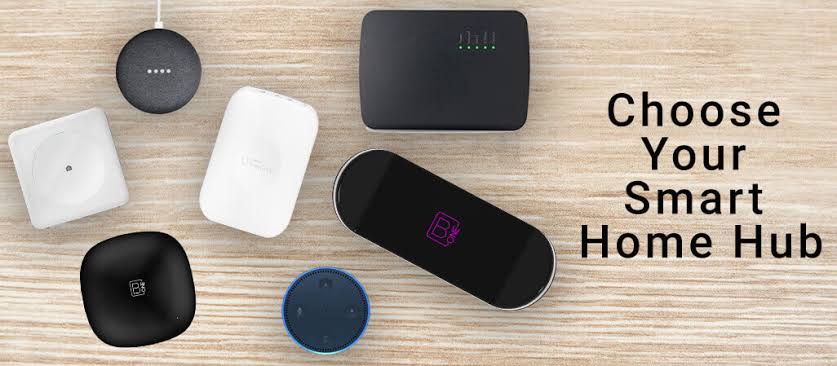A smart home hub is the control center for a connected home. It links different smart devices like lights, thermostats, locks, cameras, sensors, and voice assistants. The main job is to let you control all these devices from one place, even if they are from different brands or use different wireless systems. Instead of using many apps, the hub brings everything together for easier and smoother control.
As of July 2025, the demand for smart home systems in Nigeria, across Africa, and globally has increased significantly due to improved internet infrastructure, heightened security concerns, and the growing popularity of AI-driven automation. Selecting the right hub depends on individual household needs, compatible devices, and preferred ecosystems.
Identify Your Smart Home Goals
Before choosing a smart home hub, the first step is understanding what you want your smart home to achieve. Are you interested in automating lights and appliances, improving security, monitoring energy consumption, or creating routines for daily convenience?
For example, if your main goal is security, a hub that supports real-time alerts from smart locks, video doorbells, and motion detectors is crucial. On the other hand, if comfort and ambiance are your priorities, then compatibility with lighting systems, smart blinds, and voice-controlled entertainment systems might top your list. Knowing your priorities will help narrow your search to hubs that cater to those specific needs.
Consider Device Compatibility and Ecosystem Integration
Not all smart home hubs support the same devices or platforms. Some are built to function best within their native ecosystems. For example, Apple HomePod integrates well with devices using Apple HomeKit, while Amazon Echo devices are optimized for Alexa-compatible gadgets. Similarly, Google Nest Hubs work seamlessly with Google Home-supported devices.
With the widespread adoption of the Matter protocol—a unifying standard launched in late 2023—compatibility between devices from different manufacturers has improved greatly. By July 2025, most new smart devices now support Matter, which means they can communicate more freely, regardless of the hub or brand. However, you should still double-check whether both the hub and your existing or planned devices support Matter, Zigbee, Z-Wave, Wi-Fi, or Bluetooth.
Evaluate Voice Assistant Support
Voice control is now a standard expectation in most smart home setups. The three major voice assistants are Amazon Alexa, Google Assistant, and Apple Siri. Each assistant comes with its own ecosystem and strengths.
Amazon Alexa, for instance, is known for broad compatibility and reliable routines, making it suitable for users with a diverse set of smart gadgets. Google Assistant excels in contextual awareness and deep search functionality, ideal for users who rely heavily on information queries. Siri, though more limited in third-party device support, offers strong privacy features and integrates tightly with iPhones, iPads, and MacBooks.
When selecting a hub, decide whether you want built-in voice support or the option to connect to a separate voice assistant device. Many smart hubs now come with microphones and speakers that double as voice control units, reducing the need for multiple gadgets.
Assess Automation Capabilities and App Experience
Smart home hubs vary greatly in how they let you automate device actions. Some offer advanced conditional automation features—like triggering lights when a motion sensor detects activity after sunset—while others only allow basic routines.
The interface through which you configure these automations also matters. Look for a hub that provides a clean, intuitive app experience with reliable remote access. Whether you’re home or away, managing devices through a dependable mobile app is essential. Hubs like Samsung SmartThings, Google Home, and Home Assistant have made considerable improvements in 2025, offering better UI, real-time updates, and customizable dashboards.
Another aspect to consider is whether the hub supports third-party app integrations like IFTTT, which allows even more detailed and personalized automation workflows.
Connectivity Options and Reliability
A hub is only as reliable as the network it runs on. Wired connections such as Ethernet offer the most stability, especially for large setups with many devices. However, Wi-Fi-based hubs offer more flexibility in placement, especially in homes without structured wiring.
Additionally, consider hubs that include battery backup or offline functionality in case of power or internet outages. For critical automations such as security or energy management, you don’t want your system to fail when connectivity drops. As of mid-2025, many higher-end hubs are now offering local processing, meaning automations continue to run even when disconnected from the internet.
Privacy and Security Features
As smart home devices become more integrated, the question of data privacy becomes critical. Hubs that store data locally, like Hubitat Elevation or Home Assistant, are popular among privacy-conscious users. Others, like Apple’s HomeKit, use end-to-end encryption and strict privacy policies to protect user information.
Make sure to verify how your hub handles data—whether it shares user behavior with third-party advertisers or provides settings to limit cloud usage. With increasing regulatory oversight in 2025, many hubs now offer transparency reports and enhanced user controls to manage data sharing.
Scalability and Futureproofing
Your current needs might be modest, but it’s wise to choose a hub that can grow with you. Whether you’re planning to add more smart lights, thermostats, or security cameras, the right hub should support scalability without frequent upgrades.
A hub with multiple protocol support (such as Matter, Zigbee, and Z-Wave) is more futureproof. You should also look out for hubs that receive regular firmware updates and have an active developer or support community. This ensures that your investment remains functional and secure over time.
Compare Price vs. Features
Smart home hubs come at different price points. Entry-level hubs like Amazon Echo Dot or Google Nest Mini offer basic functionality at a lower cost. Meanwhile, mid-range options like Samsung SmartThings Station or advanced options like Homey Pro offer more comprehensive device compatibility, offline capabilities, and deeper automation tools.
Your budget should match your goals. There’s no point in overspending on features you may never use, just as you shouldn’t underinvest if you need a robust and flexible system. Factor in not just the cost of the hub, but also potential subscription fees for advanced automation features or cloud storage.
Final Thoughts
Choosing the right smart home hub in 2025 means thinking about your needs now and later, and which devices you prefer. New tech like the Matter protocol and smarter AI make smart homes easier and more connected than before.
By understanding your goals, evaluating compatibility, and weighing features against costs, you can select a hub that truly fits your lifestyle. Whether you’re building a minimalist setup or a fully automated environment, the right hub can simplify your life, enhance your comfort, and improve your home’s overall efficiency.



